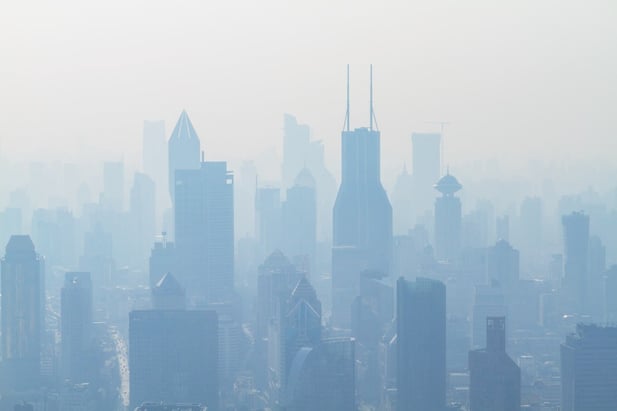Newsletter
Many factors in our lives can impact asthma in different ways.
Your activity level, environment, air quality, and health all contain potential asthma triggers, which can make asthma difficult to manage. Triggers spark asthma symptoms like shortness of breath, wheezing, tightness in the lungs, and coughing, which may contribute to an asthma attack and the use of a rescue inhaler.
Because knowing and understanding potential asthma triggers can help you more effectively manage your asthma, we put together a guide to common asthma triggers, which you can use to figure out which asthma triggers are impacting your breathing.
Dust Mites & Asthma
Dust mites are nasty little critters that make themselves right at home in your bed, your linens, and couch. These tiny organisms are barely visible to the naked eye and feed off moisture in the air.
Dust mites can act as a trigger for both asthma and allergies. So, how do you know if dust mites are affecting your health? Consider the symptoms:
- Itching
- Sneezing
- Red, watery, and irritated eyes
- Wheezing, coughing, and tightness in your chest
Dust mites thrive and multiply easily in warm, humid environments, and dust mites love to cozy up to items like pillows, rugs, carpets, and mattresses. If dust mites are triggering your asthma, you may constantly experience issues with your breathing.
Dust mites are not seasonal. You can’t get rid of them, but you can cut down on their population. The Mayo Clinic suggests:
- Wash bedding in hot water every week
- Use pillow covers
- Remove dust with a wet rag or mop
- Vacuum regularly (HEPA filter recommended)
- Keep humidity low in your home (use a dehumidifier or air conditioner)
Air Pollution & Asthma
Polluted air can trigger your asthma symptoms. Asthmatics are sensitive to unhealthy air, which can make it harder for asthmatics to cope on moderately polluted days, not to mention hazardous days.

There are several components of air quality that can have you reaching for your inhaler or calling your doctor.
Mold
The CDC warns that molds can trigger asthma attacks, so if your home has mold, you may be experiencing chronic asthma issues.
Molds are a group of fungi that thrive in warm, humid places. When molds dry up, they can break off of their substrate and get kicked up into the air for you to breathe in. Molds also release spores (for reproductive purposes) that behave similar to PM10 particles, but with a twist. Some molds are relatively harmless, but others may be toxic, so it is important to keep an eye out for mold growth in your home, especially for sensitive individuals like asthmatics.
To combat mold, try turning on the air conditioning and using a dehumidifier. This will keep the air in your home nice and dry, preventing molds from gaining a foothold. Most air quality monitors can track humidity levels in your home, but it's important to remember that air quality monitors can't measure mold levels in your home. For regular mold check-ins, be sure to look for any leaks or water damage, as this could provide breeding ground for molds to flourish.
Pollen
Like molds, many species of flora use tiny particles to reproduce. In this instance, we like to call this phenomenon "pollen."
Again, much like mold, pollen is a form of particulate matter (PM). Particulate matter is one of six common air pollutants designated by the Environmental Protection Agency and in many areas pollen season is growing. Pollen, as a form of PM10, is so small that it can be inhaled. PM10 can lead to short and long term breathing issues.

Pollen allergies can trigger asthma symptoms. Pollen count varies by season, but the EPA says that spring pollen season is dragging on in many U.S. cities by up to 25 extra days. The journal Lancet Planetary Health also indicates that the growing pollen season increases as the average world temperature rises due to climate change.
Fine dust (PM2.5)
The EPA labels fine dust, or PM2.5, as the most dangerous type of particulate matter on Earth. PM2.5 can be inhaled deep into the lungs, seeping into your bloodstream and even entering your brain. PM2.5 includes everything from metals to organic compounds, and fine dust particles are smaller than pollen and mold spores, which fall under the range of PM10.
PM2.5 is known to trigger asthma symptoms. A 2018 study correlated more exposure to PM2.5 to the increased use of a rescue inhaler. Exposure to PM2.5 is also blamed for an increase in emergency room visits and hospital stays.

Infections & Asthma
Viral and bacterial infections on their own are health concerns, but infections may also trigger asthma symptoms. For example, the common cold can become an asthma trigger in many cases. A 2015 study found 48 out of 50 asthmatics who suffered from a viral infection developed asthma symptoms within 48 hours.
Luckily, there are many tools at our disposal to prevent viral and bacterial infections. The Mayo Clinic suggests practicing proper and frequent handwashing to steer clear of illnesses. Turning on the humidifier in your home will add moisture to the air, which can soothe coughing and sinus pressure. The Mayo Clinic also recommends avoiding cigarette smoke and polluted air while you are battling a cold or sinus infection, as exposing yourself to these conditions could exasperate your asthma symptoms.
Weather Changes & Asthma
Winter months can be a rough time for asthma sufferers. Not only are you more susceptible to catching a cold or the flu, but the cold, dry air can trigger your asthma.
Your winter wardrobe can help. Sport a scarf when you go outside and limit your outdoor activity. Winter also means many people are using a fireplace, so you should be aware that the smoke from your fireplace contains particulate matter. A 2016 study found a link between the rise in asthma issues and fireplace use during the winter.
Springtime ushers in new potential asthma triggers. Allergies can set off asthma symptoms. The American Lung Association recommends keeping your allergies in check by talking to your doctor about the best treatment options. It's best to stay inside when pollen counts are high, and to limit certain activities like gardening to the morning, when the pollen count is the lowest for the day.

Springtime allergies can trigger asthma flare-ups.
Summer months mean sunshine, open windows, and backyard fire pits, but it all comes with potential asthma triggers. Outdoor air quality can tank as humidity and smog sets in during the summer haze. Asthmatics will feel the weight of a poor air quality day. Other irritants include bug spray and citronella candles, which can trigger an asthma episode. Consider avoiding both or finding alternatives to ward off bugs.
Burning a fire in your backyard fire pit or while camping can also trigger your asthma symptoms. Like fireplaces, wood smoke from campfires has particulate matter that can lodge in your lungs.
Identifying Your Asthma Triggers
Now that we've discussed potential asthma triggers, let's address some helpful tips on how to manage these asthma triggers.
Book an appointment with an allergist
Allergies and asthma often go hand-in-hand. Allergies can trigger asthma symptoms, a relationship often referred to as allergic asthma. Allergic asthma is the most common type of asthma alongside exercise-induced and cough-variant asthma. An allergist can perform a skin or blood test to determine if you have allergic asthma. An allergist can also tell you exactly what you are allergic to — from grass and trees to dogs and cats — and if you have seasonal or year-round allergies.
Pay attention to patterns
Look for changes in the weather, indoor and outdoor air quality, and the seasons. An indoor air quality monitor for your home can arm you with all the information you need to improve the air your family breathes year round. The Laser Egg keeps track of PM2.5 and total volatile organic compounds (TVOCs), chemicals which are emitted from paint, cosmetics, and cleaning products.
Take note of the days you have issues with your asthma and jot down the weather in your town. You may see a pattern over time. High humidity and heat are the perfect mix to breed mold which could be bothering your lungs. Humidity can also trap air pollution, and, as we mentioned earlier, cold air can also be an asthma trigger.
Download an air quality app
We broke down a few of the free options here. These air quality apps will help you make critical decisions about how much time you spend outside for leisure or exercise. Some apps will send you push alerts about the air quality index reading (AQI) in your city and forecast AQI for the day.
You can’t avoid everything that could trigger your asthma, but you can minimize your exposure. Understanding what triggers your symptoms is the first step. Armed with information, you can make conscious decisions to avoid unhealthy air and take action to improve the quality of air in your home.






.png?width=200&height=148&name=Menu%20C%20(2).png)

.png?width=307&height=228&name=Menu%20-%20D%20(1).png)
.png)




